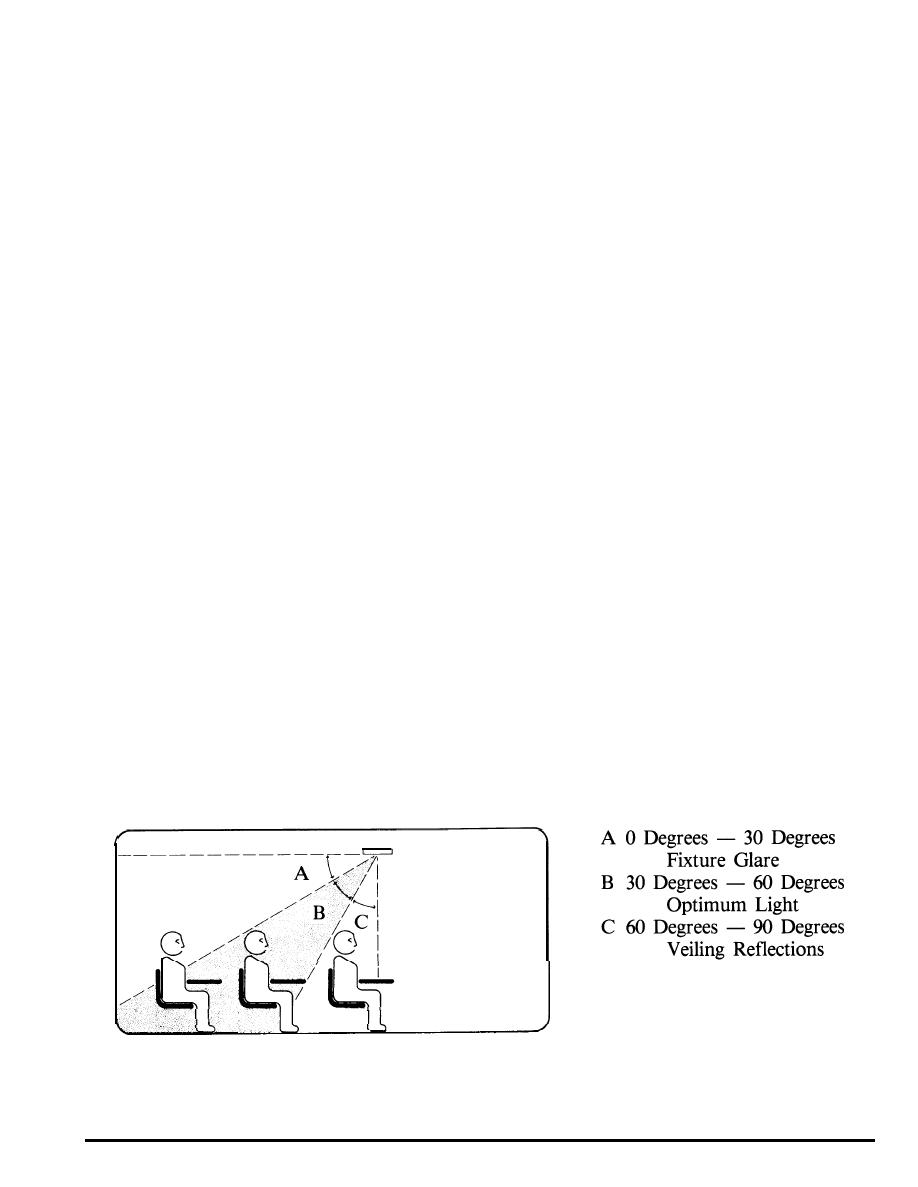
DG 1110-3-106
and understand best when the illumination level is high
to a lighted area. When moving from light to dark,
however, minimal adaptation requires two minutes,
enough to provide a clear view of their surroundings.
On the other hand, too much sensory input of any
total adaptation up to half an hour. Since personnel
entering the service school facility will be coming from
sort distracts the student and causes an inordinate
the outdoors, where the level of illumination may be
amount of his energy to be expended in filtering out
the extraneous input. The sensory stimulating aspects
anywhere from 2,000 to 5,000 foot-candles, it is
important to provide adequate lighting in circulation
of the environment must therefore be balanced so as
spaces. Foyers will be bright to permit gradual
to conserve the student's energy, while at the same
time providing the necessary stimulation to promote
adaptation to the interior lighting level. Staircases
the optimum physiological and psychological conditions
should have high-intensity lighting to outline steps,
for learning.
handrails, and other important elements and show
clearly the stair's configuration.
B. Lighting Design.
(4) Quality of Light.
The quality of light is even more important than the
(1) Visual Considerations.
An appropriate visual environment with adequate
quantity. Critical factors here include:
lighting is essential for effective learning. A well
lighted classroom enhances auditory as well as visual
a. Lateral Differences in Illumination.
When personnel are placed in an environment in which
perception. In the case of a large space not provided
with a sound amplification system, lighting is an
illumination on either their left or right is significantly
important factor in the ability of the audience to hear
greater than that on the opposite side, their eyes are
the speaker. Audio-visual aids have traditionally been
subjected to distracting and uncomfortable stresses.
used in darkened rooms; however, audio-visual devices
This situation often occurs in classrooms in which
windows allow light to stream in from one side of the
designed for use in lighted rooms are more effective.
students' field of vision. Such conditions can be
avoided by designing the seating so that the windows
(2) Quantity of Light in Instructional Spaces.
Research has established that a lighting level between
are behind the student or, when this is not possible,
by moderating the entering light with shading or other
30 and 50 foot-candles is adequate for the comfortable
light-attenuating devices.
and efficient completion of most tasks. However, it is
recommended that illumination be designed to supply
70 foot-candles on all educational tasks, since accurate
b. Task-Background Illuminating Levels.
In general, the task (paper, book, item of equipment)
reading of pencil handwriting demands higher
confronting the student should be brighter than the
illumination levels than most other visual tasks.
surrounding environment. For optimum contour and
Lighting levels higher than 70 foot-candles are not
depth perception, it should be three times as bright.
required.
Contrasts greater than this produce distortions. In no
case should the task illumination level exceed ten times
(3) Quantity of Light in Circulation Spaces.
In lighting circulation spaces, an important
the general lighting level.
consideration is the ability of the eye to adapt to light
and darkness. Only 35 seconds are required for partial,
yet safe, adaptation when moving from a dark space
Figure 3-6
Lighting Glare and Reflections
3-5



 Previous Page
Previous Page
